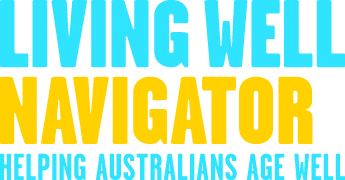
 Joining forces with fellow solo travellers is the perfect way to experience the seductive powers of Cuba. And with change on the horizon, now is the ideal time to go. Here’s our pick of travel tips to ensure you get into the rhythm of local life.
Joining forces with fellow solo travellers is the perfect way to experience the seductive powers of Cuba. And with change on the horizon, now is the ideal time to go. Here’s our pick of travel tips to ensure you get into the rhythm of local life.
Few places in the world are as enchanting as Cuba. Although it’s been 20 years since my first visit, I still remember being wowed by Havana’s romantic, pastel-pretty streets, dotted with vintage cars, murals of hero Che Guevara and tropical foliage. I loved wandering the Malecón, the famous seafront boulevard where locals came to fish and flirt; visiting the old Partagás cigar factory; and exploring the fascinating Museo de la Revolución. American novelist Ernest Hemingway’s former house, Finca Vigía, on the edge of town felt like he’d just left the room. Later, I sipped rum-rich mojitos and daiquiris at the famous bars he used to frequent, including El Floridita, and at the Hotel Nacional de Cuba. Come nightfall, the heady sounds of salsa filled the air at alfresco cabaret Tropicana and spilled out of homes.
Out with the old?
The US trade embargo has kept Cuba isolated since 1960, particularly during former president Fidel Castro’s rule. However, in December 2014 US President Barack Obama announced a change of policy “to begin to normalize [sic] relations” between the two countries, and subsequent changes in January and September of this year have already seen a softening of restrictions. When the economic embargo is formally lifted, American business and tourism will probably flood in, changing the country’s old-fashioned ways forever. It will likely bring prosperity, but Cuba may lose some its unique culture as well.
With this in mind, Will Shoubridge, Exodus travel agency’s trade marketing manager, advises visiting Cuba soon. “The magic of Cuba lies in its ability to safeguard its historical legacy, and it’s still a relic of another era. But the clock of commercialism is ticking, and change is on the horizon soon, with the stifling US trade embargo slowly to be lifted.”
Recently back from a solo trip to Cuba, Get Lost’s deputy editor Carrie Hutchinson also thinks now is the time to go. “You can already feel there’s a change coming over Havana, and with frosty relations with the US thawing by the day, it’s probably not a bad idea to get to Cuba before the Americans do,” she suggests. “It’s one of those places that seems trapped in another era, but I’m sure that won’t last for much longer. Parts of the Habana Vieja [Old Havana] have already been completely refurbished, although they still maintain plenty of character. I found wandering further back towards Centro Habana more exciting. The streets are narrow and potholed, full of kids playing football, and you’ll discover cool street art.”
Safe haven for singles
Cuba is perfect for solo adventures, says Shoubridge. “Over half of our passengers are travelling solo, and Cuba’s vibrancy and energy are fantastic to experience in a group of like-minded travellers.”
Hutchinson was also pleasantly surprised by how safe she felt as a female traveller on her own. “I was staying in a casa particular [a room in a private house] in Vedado, and my host Lilly said it was perfectly okay to walk alone, even at night, which is not something you ever think you’ll encounter in 2015.”
Venturing beyond Havana
Although Havana is amazing, it’s worth exploring beyond the capital. As the Caribbean’s largest island, Cuba deserves at least two weeks of your time, says Shoubridge, so you can “fully immerse yourself in Cuba’s generous serving of rhythm, rum and revolution. Living Well Navigator’s Cuba: La Isla Grande trip offers exactly that, with experienced local guides to explain the time warp of Cuba’s Spanish influences, sugarcane boom, fight for independence and the recent fall of socialism.” The tour takes in world-class sandy beaches, grandiose colonial buildings, and stunning mountainous countryside and forest.
Shoubridge’s highlights include “strolling through Old Havana’s backstreets of dilapidated colonial buildings with Latin rhythms permeating every corner, relaxing in the lively coastal town of Baracoa surrounded by rainforest and lush cocoa plantations, and visiting the World Heritage-listed town of Trinidad, famous for its maze of cobblestone streets and pastel houses.”
In the past, food rationing made it hard to find tasty meals in Cuba even as a tourist – although the cocktails were great. It’s still tough for locals, but these days, there’s more choice. “If you love to indulge on holidays, Cuba probably wasn’t the place for you until recently,” says Hutchinson, “but now there are paladares [private restaurants] opening all the time. You can find just about any cuisine you like, but the seafood is fantastic. My favourite paladar was Café Laurent in Vedado. Book a table on the fifth-floor patio for lunch so you can stare out over the Straits of Florida while eating ceviche and grilled fish”.
Are you interested in visiting Cuba? What’s your favourite solo travel experience to date?
 This article has been sponsored by NRMA’s Living Well Navigator.
This article has been sponsored by NRMA’s Living Well Navigator. .
.